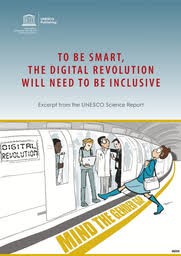Inclusion is Smart and Good But? Digital Technologies, Science and Gender

Krishna Ravi Srinivas, PhD, Consultant & Senior Fellow , RIS On the Occasion of International Day of Women and Girls in Science (11 th February) , UNESCO released a chapter from the forthcoming World Science Report (WSR) , titled as ‘ To be smart, the digital revolution will need to be inclusive’ [1] focussing on the gender dimension and the case for inclusion in, inter alia, digital technologies, innovation, and science. Given the emphasis on smart in the title of WSR, the title of the chapter is not surprising. The chapter highlights various issues in gender inclusion in Fourth Industrial Revolution (4IR) , AI, STEM, diversity in technology sectors, patents and intellectual property rights and the need to measure gender inclusion. In the 4IR, skills shortage that is expected can be addressed by educating and training women. “ For women to seize upon the opportunities offered by the 4IR, there will need to be a level playing field in terms of access to enablers such